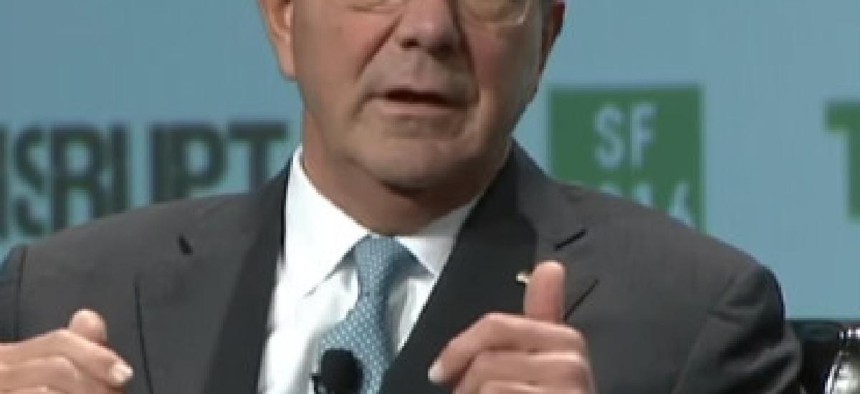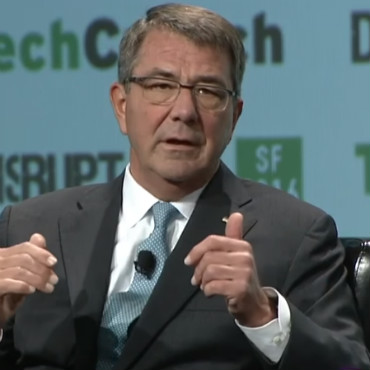DOD launches new tech hub in Austin

The DOD is opening a new Defense Innovation Unit Experimental office in Austin, Texas, while Congress debates legislation that could defund DIUx.

Defense Secretary Ash Carter speaks at the TechCrunch Disrupt conference in San Francisco.
The Department of Defense is launching its third Defense Innovation Unit Experimental office as some members of Congress seek to cut funding for the DIUx program.
Secretary of Defense Ash Carter announced on Sept. 14, that Austin, Texas, joins Silicon Valley and Cambridge, Mass., as DIUx hubs.
"Austin's commitment to innovation, access to talent and academia, as well as the department's longstanding ties to Texas make this an ideal next location for DIUx," Carter said in a statement.
Austin's DIUx office will be a "light" version compared to the other two locations and will be filled primarily by reservists and National Guard members working in Austin's tech sector. DIUx Austin will share space with tech incubator Capital Factory, and will be led by former deputy assistant secretary of defense for Afghanistan, Pakistan and Central Asia, Christy Abizaid.
"It's not going to take the same level of resource as their Mountain View office or as their Cambridge office," said Ben Fitzgerald, Senior Fellow and Director of the Technology and National Security Program at CNAS. "So, from that perspective, just in terms of showing that they're reaching out, having a point of presence but not getting overly engaged, I think it was a good move."
Carter spoke on Sept. 13, at the TechCrunch conference in San Francisco, where he acknowledged that the private sector has significant reservations about working with the DOD. DIUx, he said, is "the idea is right, that's why I'm building on it."
The Defense secretary said DIUx seeks to build bridges with the tech community and find ways to speed up collaboration and draw the private sector to the public service mission.
"People are doing what they're doing out here because they want to make a difference," said Carter. "If I come and meet you half way, you can participate in something of really great consequence."
He said that members of the tech community are particularly concerned with maintaining their values and lifestyle, "and that means I have to change the way we behave so that we can interact with people in a way that's more user friendly."
After a troubling start, Carter revised and rebooted DIUx in May with a new leadership structure.
"The principle issue we were having was speed -- we weren't as agile as the people we wanted to connect to want to be," he said of the initial iteration.
"I think that the secretary's decision to reboot the DIUx… was the right choice," said Fitzgerald. "I think that sent the right message that we need to try new things and if they don't work, change them quickly. He stayed true to his word and did that with one of his own initiatives."
FitzGerald said that since May, DIUx has reduced the time to contract a project to 30 to 50 days.
"They have figured out a system by which they can do that regularly… they are using the prototyping authorities laid out in the 2016 National Defense Authorization Act and they are using other transactional authorities to bypass, legally bypass, a lot of the compliance and reporting strictures that are associated with defense contracting."
Despite the apparent successes of DIUx 2.0, its future is uncertain on two counts. First is whether the next administration will make the program a priority. Second is what will come out of the 2017 NDAA.
The House Armed Services Committee has raised concerns about the clarity of the DIUx mission, and the focus on Silicon Valley -- concerns FitzGerald said were valid, but possibly allayed by the reboot.
Language previously approved by the HASC cut $30 million in funding for DIUx, and it remains to be seen if that will survive the conference process on the NDAA.
According to the DOD, DIUx has signed five agreements worth $3.5 million, and has 22 additional projects worth $65 million in the pipeline.
NEXT STORY: 5 steps to more effective CTOs


